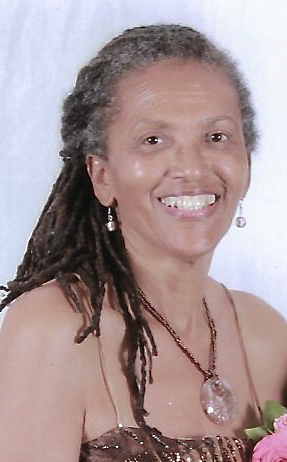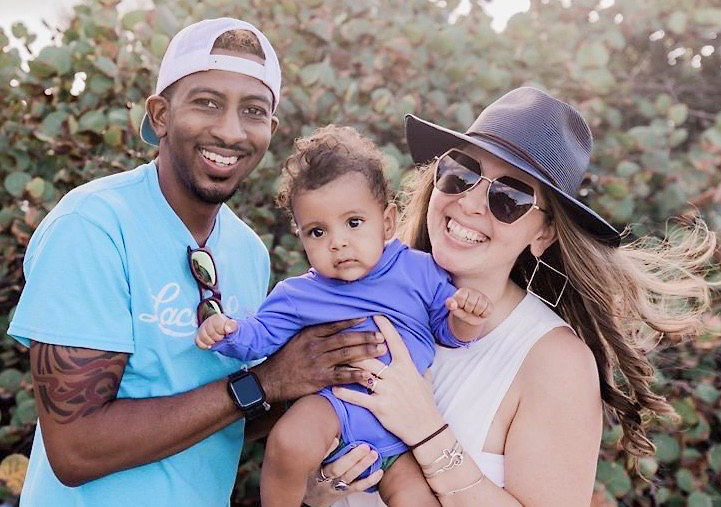The following stories are part of a series highlighting the experiences with systemic racism on the American mainland of Black men and women who grew up in predominantly Black communities in the Caribbean.

Ruby Simmonds Esannason was born and raised on St. Thomas. Her first five years of school were spent at Miss Boynes Private School on St. Thomas. Many of the territory’s luminaries of a certain age were products of a Miss Boynes’ early education, Simmonds Esannason recalls.
After fifth grade, Simmonds Esannason attended Abraham Lincoln Elementary School – now Jarvis School – until she moved up to Charlotte Amalie High School where she graduated in 1965 as valedictorian of her class.
“Growing up I always knew I was as good as anyone else,” she said.
A lifelong Lutheran, it seemed pre-ordained she would attend 160-year-old Augustana College – founded in 1860 by the Scandinavian Evangelical Lutheran Augustana Synod and located in Rock Island, Illinois.
“I was the only Black student,” she says, but then corrects herself. “Actually, there were 12 of us.” The school’s enrollment at the time was about 2,000 students.
She says growing up on St. Thomas there were white children in her schools, but this was her first experience with being a minority.
In her freshman year, her roommate had been asked, “We have a pretty little negress here, would you like to room with her.” She recalls, “Nobody ever asked me who I wanted to room with.”
There were other occurrences that “stood out,” she remembers. One of them she says, “stayed with her,” from her experience at Augustana, a church school the students attended worship services at various congregations in the area. Simmonds Esannason and about 15 classmates had been bused to a Lutheran church in Moline, Illinois. She was the only Black person in the church.
As she knelt at the communion rail, she remembers like it was yesterday – “The white man next to me got up and moved.”
Another memorable moment: “When I was a junior, we had a semester break and a friend wanted to bring me home with her.” Many if not most of the students at Augustana grew up on farms, Simmonds Esannason says, “I overheard my friend saying to her mother over the phone, ‘But mom, she’s different. She’s from the islands.’”
That friend later admitted that her family had spirited away her grandmother during Simmonds Esannason’s visit lest the older woman say something “that might hurt my feelings.”
In 1968, her junior year, Simmonds Esannason was again visiting a college acquaintance – this time in Omaha, Nebraska. “We were in the movies when we heard Martin Luther King had been shot.”
She remembers being at the family’s kitchen table the next day when her friend’s mother and a neighbor were discussing the King assassination. Though she didn’t reveal the exact conversation, it was racist enough for Simmonds Esannason to say nearly 60 years later, “I was sitting at the same table; either they didn’t realize I was Black or didn’t see me at all.”
Soon enough Simmonds Esannason’s stateside college experience went from what might be considered “softcore racism,” to vividly obvious animus.
A number of Black students drove from Rock Island, Illinois, to Benton Harbor, Michigan, for a conference. There had been advance notice of their impending arrival.
“When we got there, here’s what happened: Someone had erected an effigy of Aunt Jemima and burned it.” The students were given what Simmonds Esannason called a piece of “friendly advice” which was, that if they had to go to a store for something, to leave their engine running and get back in the car as quickly as possible.
Simmonds Esannason took that advice when she graduated. “I survived it all and came right back home.”
But the racism was to follow her into her safe harbor.
In the early ‘80s, she recalls it was hard to miss the “houseboats” that crowded the Charlotte Amalie Harbor “from the Legislature to Frenchtown.”
As a Virgin Islands senator at the time, Simmonds Esannason drafted legislation that called for the erection of finger piers where the boats could tie up, thus minimizing the damage to the fragile ecosystem of the harbor. The draft legislation also called for the boat owners to register the vessels and pay fees for using the U.S. Virgin Islands as their home. The boat owners would also have been afforded pump-out stations to prevent them from dumping their human waste into the gentle waters lapping over the waterfront.
“The way I saw it was, the boats had to be regulated. This was our harbor, our home.”
But instead of being grateful for the projected amenities and acquiescing to becoming contributors to the community, Simmonds Esannason says, “They saw me as the enemy.” Some may remember the “boat vote” stickers that began to appear around St. Thomas.
Around the same time, emboldened by hearing Angela Davis speak in Nashville at a conference on “Black Women and the Law,” Simmonds Esannason penned a letter to the editor about the Nashville conference and the need for Black women to speak up.
“Somebody took offense.” She was told to “go back to the ghetto.”
But much more unnerving, she was called a nigger and had her life threatened. She had a friend who was a police officer who would bring her children to her at the Legislature from Ulla Muller Elementary School.
“There are things that happen even here in the Virgin Islands.”

Dr. Jason Williams, who says he is far better known as Jay Will – or Dr. J – was born in New Orleans to parents from Trinidad. But by the time he was six months old, he was living on St. Croix, where his father had gone to work for Hess Oil Corporation, as the refinery was known until 1998.
His primary and secondary education were received entirely from private schools on St. Croix, and while he notes the lack of diversity in the faculty members left an underlying scent of racism, it was mild compared to his stateside experiences.
In 2005, Williams left for America’s heartland to attend St. Louis University.
He describes the school as Jesuit, expensive and sorely lacking in diversity.
“It’s where midwestern kids go,” he said.
Williams says he was a small guy at the time – 5 foot 6 inches and 120 pounds maybe. During a friendly game of flag football, Williams recalls accidentally knocking over another player whose immediate response was, “What the fuck, nigger!”
“As soon as he said that, I got in his face and said, ‘I bet you won’t do that again.’”
Meanwhile, Williams’ friends had joined the fray to back him up. “I never saw the guy again, anywhere.”
Williams comes from a family of chiropractors so it was a no-brainer that he would follow in his father and sister’s footsteps to attend Logan University in Chesterfield, Missouri. Logan sits in the middle of a wealthy white community, a fact he had been warned about. “I mean wealthy, too. Like, they drive Maseratis – that type of wealth.”
Only someone familiar with the territory he is speaking about can fully understand the thin lines between what Williams describes as east county and west county St. Louis. The Logan campus is in west county – while, the university is in east county.
With only one road separating the two areas, there still remained a “very distinct divide.”
Williams says while he never got pulled over by police in east county, “when I went to west county, I had 10 or 15 encounters” with police.
On one occasion, with his father in the car, he was traveling about three miles per hour over the speed limit and was pulled over. The first question from the officer was, “Is this your car?”
Of course it was his car – and a fairly nice car too – hence the cop’s question.
Williams was issued a “speeding” ticket.
While he was still attending St. Louis University, Williams remembers a friend he had and how and why the friendship ended for good a year or so after graduation.
“We played soccer together and hung out a lot,” he recalls. When they graduated, Williams went off to Logan and his friend became a police officer.
“We had lost touch for about a year,” Williams remembers.
One day, out of the blue, Williams gets a call from his erstwhile friend who tells him about an edict his friend had been issued by his superior officers regarding the wealthy community.
“We have been instructed to look for anyone who might be ‘out of place,’ in Chesterfield,” his friend warned him.
“Out of place was a euphemism, of course,” Williams says.
“Driving a nice car in Chesterfield, they are going to look for you and pull you over,” his former friend said.
Former because Williams concluded the man in question could not be counted as a friend.
“It’s not like we were super close,” he says, “but why would he want to be part of an organization like that?”
His next memory involves his now wife, who he met in medical school.
It was summertime. He and Loriann were driving through an area of Chesterfield known as Town and Country. Here’s a description of the area from Wikipedia: Town and Country has the highest median household income of any city in Missouri with a population over 10,000 and also has one of the highest median incomes of any city in the world.
The pair were just passing through on their way to meet a friend in downtown St. Louis, when they were pulled over by a white, female police officer.
It was the middle of the day and Williams was going the speed limit.
“I’m like, ‘I’m tired of this shit.’”
He says to the officer, “I know I was not speeding, so why did you pull me over.”
The officer says she is running a check on the “expired” Indiana plates on the car.
Williams calls B.S. because it just so happens that just one week earlier Loriann had gone to Indiana – two states away – specifically to re-register her tags.
“So why exactly have you pulled me over,” he asks the officer and then answers his own question. “It is because you saw a black man with a white woman it the car.”
With that the officer walks away saying over her shoulder to Williams and Loriann, “You have a nice day.”
Williams says he never intended to stay in the Midwest when he finished school.
“I came home immediately. I never planned on being anywhere else.”
Other stories in the series:
Racism is Defined by Experience: Prologue
Racism is Defined by Experience: Chapter One
Racism is Defined by Experience: Chapter Two


